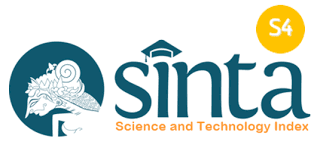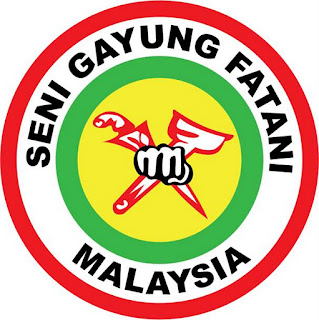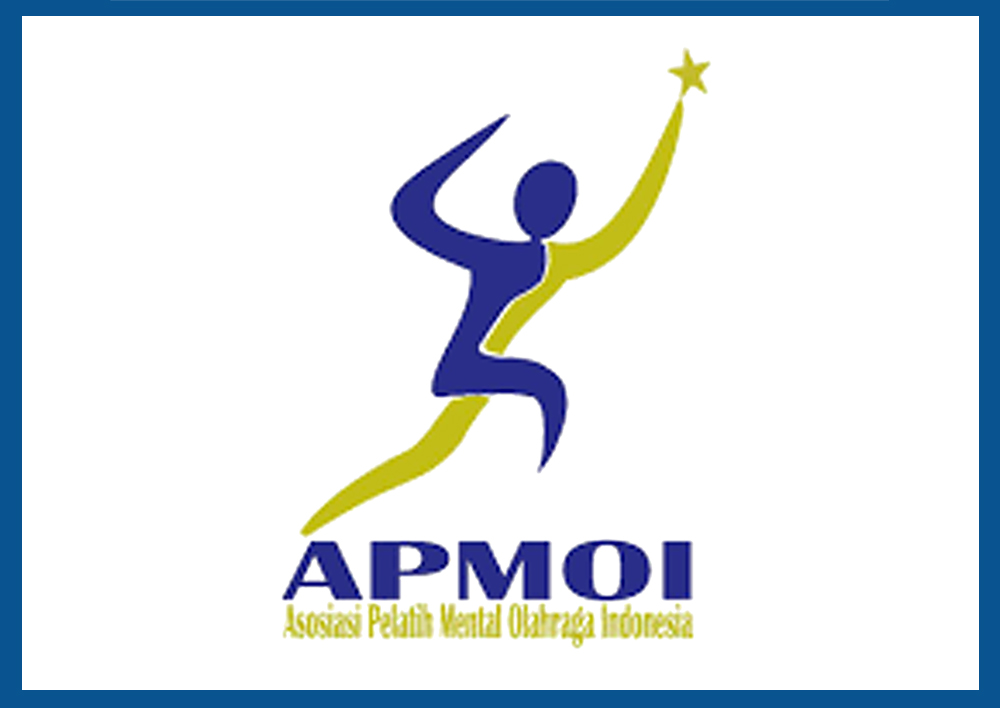Kecakapan hidup atlet softball remaja
Abstract
Masalah: Partisipasi pemuda dalam berolahraga memiliki potensi yang sangat besar dalam perkembangan usianya. Secara umum diyakini bahwa melalui olahraga, anak-anak dan remaja belajar nilai dan keterampilan itu akan melayani mereka dengan baik ketika mereka mempersiapkan diri untuk sisa hidup mereka. Sayangnya, banyak program tidak terstruktur dengan baik atau diimplementasikan sedemikian rupa, sehingga kecakapan hidup yang bisa dipelajari dalam olahraga dipindahkan ke domain kecakapan lainnya.
Tujuan: Tujuan dari penelitian ini adalah untuk mengetahui hubungan dari teamwork, social skills, goal setting, leadership, problem solving and decision making, interpersonal communication, emotional skills, dan time management dengan kecakapan hidup atlet softball.
Metode: Responden terdiri dari 174 orang atlet remaja putra dan putri berusia dibawah 21 tahun di Indonesia yang aktif berlatih dan bertanding. Ini merupakan penelitian deskriftif dengan survey analisis, Instrumen yang digunakan yaitu Instrument yang digunakan untuk mengevaluasi kecakapan hidup dalam bidang olahraga ini yaitu menggunakan Life Skills Scale for Sport (LSSS) yang dikembangkan untuk menilai delapan variabel di atas.
Hasil: Analisis korelasi kecakapan hidup, dalam cabang olahraga softball menunjukan terdapat dua variabel yang memiliki hubungan yang sangat kuat dengan kecakapan hidup yaitu variabel kepemimpinan dan komunikasi interpersonal, lima variabel memiliki hubungan yang kuat dengan kecakapan hidup yaitu variabel kerjasama tim, goal setting, manajemen waktu, kecerdasan emosional, dan kecakapan sosial, serta varibel dengan hubungan yang cukup kuat yaitu pengambilan keputusan.
Kesimpulan: Teamwork, social skills, goal setting, leadership, problem solving and decision making, interpersonal communication, emotional skills, dan time management memiliki hubungan positif dengan kecakapan hidup atlet softball.
Downloads
References
Botvin, G. J., & Griffin, K. W. (2004). Life skills training: Empirical findings and future directions. Journal of Primary Prevention, 25(2), 211–232. https://doi.org/10.1023/B:JOPP.0000042391.58573.5b
Camiré, M., Trudel, P., & Forneris, T. (2012). Coaching and transferring life skills: Philosophies and strategies used by model high school coaches. The Sport Psychologist, 26(2), 243–260.
Cicchetti, D., & Luthar, S. S. (1999). Developmental approaches to substance use and abuse. Development and Psychopathology, 11(4), 655–656. https://doi.org/10.1017/S0954579499002254
Côté, J., & Hancock, D. J. (2014). Evidence-based policies for youth sport programmes. International Journal of Sport Policy, 8(1), 51–65. https://doi.org/10.1080/19406940.2014.919338
Cronin, L. D., & Allen, J. (2017). Development and initial validation of the Life Skills Scale for Sport. Psychology of Sport and Exercise, 28, 105–119.
Danish, S., Forneris, T., Hodge, K., & Heke, I. (2004). Enhancing youth development through sport. World Leisure Journal, 46(3), 38–49. https://doi.org/10.1080/04419057.2004.9674365
Danish, S. J., Forneris, T., & Wallace, I. (2005). Sport-based life skills programming in the schools. Journal of Applied School Psychology, 21(2), 41–62. https://doi.org/10.1300/J370v21n02_04
Darajat, J., & Abduljabar, B. (2014). Aplikasi Statistika Dalam Penjas. Bandung: CV. Bintang Warliartika.
Düz, S. (2018). Sporun YaşaBeceri̇leri̇nEtki̇siÖlçeği̇ni̇n Türk Kültürüne Uyarlanmasi. İnönü Üniversitesi Eğitim Bilimleri Enstitüsü Dergisi, 5(9), 74–86. https://doi.org/10.29129/inujgse.360711
Ellickson, P. L., Tucker, J. S., & Klein, D. J. (2001). High-risk behaviors associated with early smoking: Results from a 5-year follow-up. Journal of Adolescent Health, 28(6), 465–473. https://doi.org/10.1016/S1054-139X(00)00202-0
Elvia Raissa Vania, Pradigdo, S. F., & Nugraheni, S. . (2018). Hubungan Gaya Hidup, Status Gizi Dan Aktivitas Fisik Dengan Tingkat Kesegaran Jasmani (Studi Pada Atlet Softball Perguruan Tinggi Di Semarang Tahun 2017). Jurnal Kesehatan Masyarakat (e-Journal), 6(1), 449–457.
Erikson, E. H., Paul, I. H., Heider, F., Gardner, R. W., & Klein, G. S. (1959). Psychological issues: Identity and the life cycle; studies in remembering; on perception and event structure and the psychological environment; cognitive control. International Universities Press.
Forneris, T., Camiré, M., & Williamson, R. (2015). Extracurricular activity participation and the acquisition of developmental assets: Differences between involved and noninvolved Canadian high school students. Applied Developmental Science, 19(1), 47–55.
Fraenkel JR, Wallen NE, H. H. (1993). How to design and evaluate research in education (Second edi).
Hellison, D., Martinek, T., & Walsh, D. (2007). Sport and responsible leadership among youth. In Positive Youth Development Through Sport (pp. 63–74). Routledge.
Holt, N. L., Sehn, Z. L., Spence, J. C., Amanda, S., & Ball, G. D. C. (2010). Physical Education and Sport Pedagogy Physical education and sport programs at an inner city school : exploring possibilities for positive youth development. March 2015, 37–41. https://doi.org/10.1080/17408989.2010.548062
Karademir, T. (2020). Sports in Gaining Life Skills: A Study on 10-14 Years Old Students. Asian Journal of Education and Training, 6(3), 485–492. https://doi.org/10.20448/journal.522.2020.63.485.492
Katalog BPS : 4501001. (n.d.).
Kendellen, K., Camiré, M., Bean, C. N., & Forneris, T. (2016). Integrating life skills into Golf Canada ’ s youth programs : Insights into a successful research to practice partnership. 0704(September). https://doi.org/10.1080/21520704.2016.1205699
Larson, R. W., Hansen, D. M., & Moneta, G. (2006). Differing Profiles of Developmental Experiences Across Types of Organized Youth Activities. 42(5), 849–863. https://doi.org/10.1037/0012-1649.42.5.849
Larson, W. (2000). Toward a Psychology of Positive Youth Development. 55(I), 170–183. https://doi.org/10.1037//0003-066X
Lerner, R. M., Lerner, J. V., Almerigi, J. B., Theokas, C., Phelps, E., Gestsdottir, S., Naudeau, S., Jelicic, H., Alberts, A., Ma, L., Smith, L. M., Bobek, D. L., Richman-Raphael, D., Simpson, I., Christiansen, E. D. D., & Von Eye, A. (2005). Positive youth development, participation in community youth development programs, and community contributions of fifth-grade adolescents: Findings from the first wave of the 4-H study of positive youth development. Journal of Early Adolescence, 25(1), 17–71. https://doi.org/10.1177/0272431604272461
Lim Tae-hee, & Jang Chang Yong. (2017). Application and effect of life skills program in sports. 체육과학연구, 28(3), 577–591.
Linver, M. R., Roth, J. L., & Brooks-Gunn, J. (2009). Patterns of adolescents’ participation in organized activities: are sports best when combined with other activities? Developmental Psychology, 45(2), 354.
Llanos Baldivieso, C. C. (2006). Efectos de un programa de enseñanza en habilidades sociales.
Mahmudah, F. N. (n.d.). DEVELOPMENT OF LIFE SKILLS EDUCATION AS CHARACTER. https://doi.org/10.12928/ijemi.v2i1.3195
Muhammad Nazir. (2004). Metode Penelitian. Ghalia Indonesia.
Onder, A. (2003). Educational drama applications for preschool children. Istanbul: Morpa.
Pittman, K. J., & Pittman, K. J. (1991). Promoting Youth Development: Strengthening the Role of Youth Service and Community Organizations.
Powell, K. (2013). Recreational Softball Coaching Manual: The Importance of Teaching Fundamentals.
Swadi, H. (1999). Individual risk factors for adolescent substance use. Drug and Alcohol Dependence, 55(3), 209–224. https://doi.org/10.1016/S0376-8716(99)00017-4
Turnnidge, J., Côté, J., & Hancock, D. J. (2014). Positive Youth Development From Sport to Life: Explicit or Implicit Transfer? Quest, 66(2), 203–217. https://doi.org/10.1080/00336297.2013.867275
Vella, S., Oades, L., & Crowe, T. (2011). Journal of Applied Sport Psychology The Role of the Coach in Facilitating Positive Youth Development : Moving from Theory to Practice. January 2013, 37–41. https://doi.org/10.1080/10413200.2010.511423
Weiss, M. R., Bolter, N. D., Kipp, L. E., Weiss, M. R., Bolter, N. D., & Kipp, L. E. (2016). Research Quarterly for Exercise and Sport Evaluation of The First Tee in Promoting Positive Youth Development : Group Comparisons and Longitudinal Trends Evaluation of The First Tee in Promoting Positive Youth Development : Group Comparisons and Longitudi. 1367(June). https://doi.org/10.1080/02701367.2016.1172698
Zarrett, N., & Lerner, R. M. (2008). Ways to promote the positive development of children and youth. Child Trends, 1–5.
Copyright (c) 2023 Jurnal Patriot

This work is licensed under a Creative Commons Attribution-ShareAlike 4.0 International License.



_(700_x_400_mm)_(3)_.png)


_(700_x_400_mm)_1.png)



